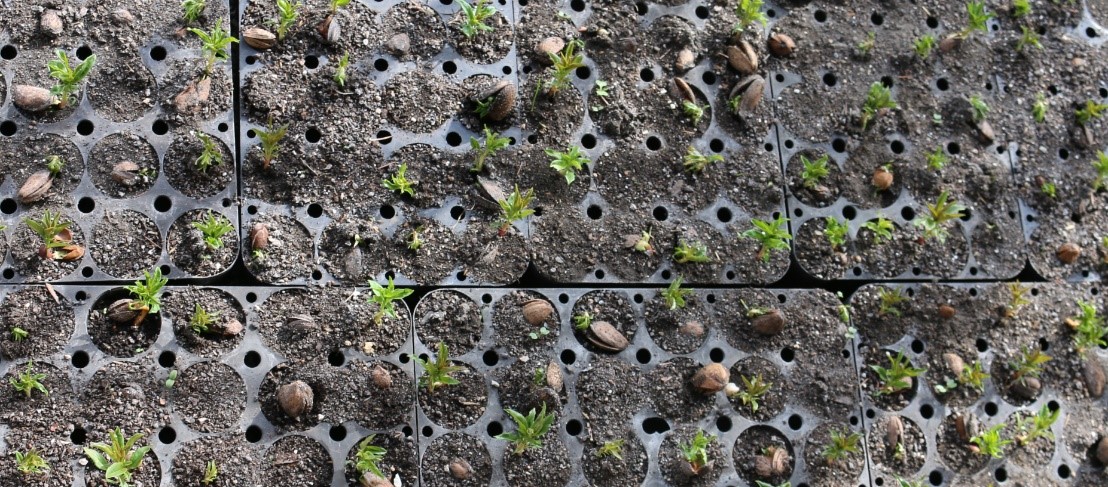The windbreaks were replanted in Shiraki valley to combat wind erosion. Robust trees and bushes were identified during almost ten years of testing with a wide range of species. Local species that survived the humid and the extremely dry and hot years were selected for Shiraki. Local nurseries provided their seedlings (containerized). The list of species with a good survival rate in Shiraki are provided below:
Bushes for outer rows: Amygdalus communis, survival rate: 40-80%; Koelreuteria paniculata, survival rate: 50-90%; Elaeagnus angustifolia, survival rate: 35-70%; Pistacia mutica, survival rate: 70-90%; Pyrus caucasica, survival rate: up to 80%, Prunus armeniaca, survival rate: 65-75%.
Trees for central row: Robinia pseudoacacia, survival rate: 50-75%; Fraxinus excelsior, survival rate: 40-55%; Celtis australis subsp. caucasica (syn. Celtis caucasica), survival rate: 50-80%; Ulmus minor, survival rate: 50-80%.
Most of these trees and bushes are fruit-bearing, drought-tolerant and often planted to combat soil erosion in arid regions.
Young seedlings should be watered at least 2-4 times per year with 5-10 litres each within the first two years.
Seeds are collected from larger rehabilitation areas (preferably from trees and bushes that had survived recent droughts) to ensure appropriate provenance and adaptation to the site-specific ecological conditions.
The seeds should be professionally prepared for planting in a nursery.
The experiments with growing almonds and wild apricots by sowing were successful. Less successful but still recommendable was the growing of pistachio by sowing.
In case, seedlings are to be transported over long distances they should be grown in special containers to ensure good root system development and minimise transport damage. If they are grown close to the planting site and the transport time is short, seedlings may also be bare-rooted.
Experience shows that most plants are safe and completely self-sufficient after four years.
